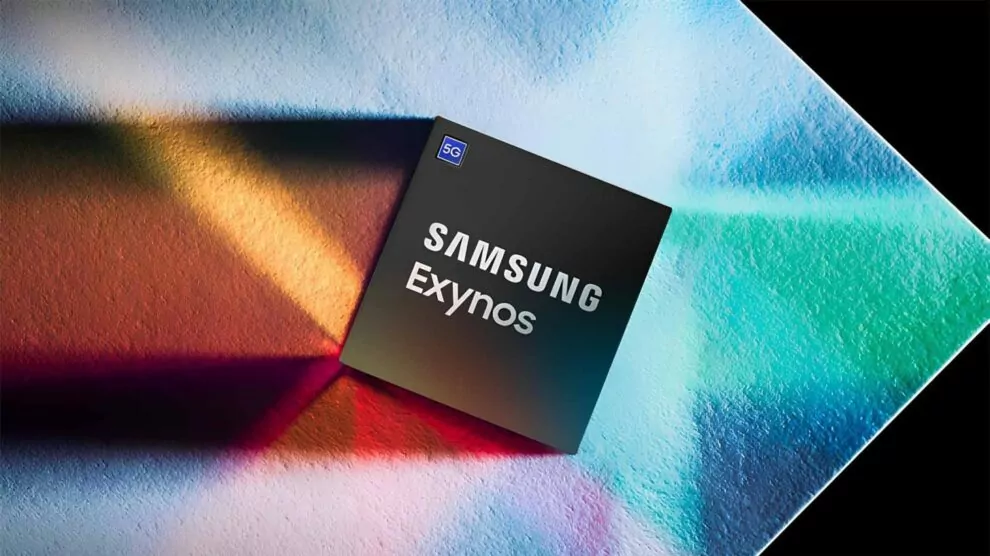Samsung appears ready to push its Exynos mobile chipsets to bold new heights with the upcoming Exynos 2500 SoC. Based on recent reports, the Exynos 2500 will incorporate major upgrades like an industry-first RDNA4 graphics processor from AMD and enhanced AI capabilities.
These ambitious hardware improvements could help Samsung finally close the performance gap with arch-rival Qualcomm’s Snapdragon platforms. Let’s analyze what the leaks and rumors suggest about the Exynos 2500 architecture and where it may place in the 2024 mobile processing landscape.
Leveraging Cutting-Edge 3nm GAAFET Manufacturing
The Exynos 2500 aims for the performance crown by utilizing an advanced 3nm Gate-All-Around Field Effect Transistor (GAAFET) fabrication process. Samsung’s foundry division is pioneering this manufacturing leap.
Compared to older FinFET processes, 3nm GAA technology allows packing transistors even more densely with enhanced power efficiencies. This provides the Exynos 2500 extra thermal headroom to boost speeds within rigid smartphone power budgets.
Qualcomm’s upcoming Snapdragon 8 Gen 3 will remain stuck on TSMC’s 4nm process, giving Samsung parity after lagging behind Qualcomm’s fabrication tech for years. Matching bleeding-edge manufacturing gives Exynos renewed hope.
Thanks to its extremely compact 3nm GAA transistors, the Exynos 2500 looks primed to set new standards for premium mobile computing while maximizing battery life efficiency – a critical smartphone metric.
AMD RDNA4 GPU Arrives on Mobile
But the most seismic upgrade on the horizon comes from the Exynos 2500’s rumored graphics processor. Samsung is skipping RDNA3 and moving straight to adopting AMD’s next-generation RDNA4 graphics architecture scheduled to hit laptops and desktops later in 2023.
AMD’s RDNA series has powered the latest Xbox and PlayStation consoles. By bringing an ultra-optimized RDNA4 GPU variation to the Exynos 2500, Samsung hopes to deliver mobile graphics horsepower never before seen in the smartphone space.
RDNA4 promises even faster clock speeds, more power-efficient designs, and improved Ray Tracing capabilities. This opens the door to mobile visuals on par with modern console and PC gaming.
The RDNA4 GPU combined with high bandwidth LPDDR5X RAM should give the Exynos 2500 graphics prowess surpassing anything Qualcomm has yet achieved on smartphones. Mobiles gaming may never be the same after this level-up.
Refined CPU Architecture for Improved Overall Performance
Besides its breakthrough GPU, the Exynos 2500 won’t neglect improving CPU performance for the critical overall system responsiveness and longevity mobile users demand.
This starts with adopting Arm’s latest Armv9 CPU architecture to replace the aging Armv8 designs of older Exynos chips. Armv9 brings benefits like enhanced security features and memory support.
Within Armv9, Samsung is also crafting a new high-performance CPU core design specifically tailored for smartphone workloads. Details remain under wraps, but Samsung promises double-digit performance gains over previous Exynos CPUs.
Combined with optimizations amplifying the CPU/GPU synergy, the Exynos 2500 shapes up to be an absolute productivity and multitasking powerhouse thanks to both bleeding-edge processing and graphics support.
AI, Imaging, Display, and 5G Subsystem Upgrades
Filling out the Exynos 2500’s arsenal of next-generation enhancements include a slate of upgraded subsystems bringing major improvements to key smartphone experiences:
New AI Accelerator
An upgraded neural processor enables advanced AI applications from computational photography to features like real-time machine translation. Samsung promises big performance leaps using less power.
Enhanced Image Signal Processor (ISP)
This allows new camera capabilities like staggering 200MP sensors and 8K video recording with lower noise and power consumption.
Improved Displays
The new display subsystem supports the latest screen technologies from variable refresh rates to 4K resolution while using less battery.
Next-Gen 5G/Wi-Fi Modem
An integrated 5G modem with support for new protocols like Wi-Fi 7 keeps the Exynos 2500 swift and responsive on wireless networks.
These broad subsystem advancements will synergize with the headline CPU/GPU improvements for exceptional overall mobility experiences surpassing even premium flagship standards.
Outlook for Performance: Snapdragon Competition and Benchmarks
Based on these tantalizing hardware upgrades, Samsung seems ready to push the mobile computing envelope and take back the Android performance crown from Qualcomm’s dominant Snapdragon series.
The Snapdragon 8 Gen 3 arriving this year already loses its manufacturing edge to Samsung’s 3nm process lead. When considering the RDNA4 GPU could trounce even desktop-class Adreno graphics, Qualcomm faces stiff competition.
If the Exynos 2500 lives up to its potential, leaked benchmarks indicate it could surpass even the Snapdragon 8 Gen 4 arriving in late 2024 by comfortable margins while delivering better power efficiency.
Samsung regaining pole position in both synthetic benchmarks and real-world experience tests would represent a major coup. With these ambitious moves, they appear dead set on levelling the Android playing field after years of trailing behind Qualcomm.
Unlocking True Global Flagship Potential
The most important ramification of the Exynos 2500’s potential would be Samsung finally possessing flagship SoC capabilities competitive on a global scale.
Past Exynos shortcomings meant many Samsung devices still relied on Snapdragon chips in high-performance scenarios like the Galaxy S22 in the United States. This fragmentation created an inconsistent experience.
With the Exynos 2500’s improvements, Samsung could standardize regional rollouts around their in-house chip. Consumers worldwide would enjoy the same level of cutting-edge power and capabilities when purchasing a Samsung device.
Qualcomm still maintains a leading modem advantage. But for pure processing, Samsung seeks to erase remaining doubts and stand united under the Exynos family worldwide.
Previewing Devices That Could Get Exynos 2500
Assuming a late 2023 unveiling, the Exynos 2500 seems poised to ship inside consumer Samsung devices by early 2024. Which models might be likely candidates for these next-gen Exynos chips when they hit the market?
Galaxy S25 Series
The mass-market Galaxy S series represents the obvious flagship phone lineup destined to premier Samsung’s best mobile silicon.
Galaxy Z Fold 6 / Z Flip 6
Samsung’s premium foldable series demands maximum power. The Exynos 2500 provides an ideal fit for top-tier folding phones.
Galaxy Ultra Tablet / Book
Samsung’s Android tablet and hybrid laptop devices need cutting-edge processing to compete against Apple’s iPad and MacBook dominance.
With capabilities rivalling laptops, the Exynos 2500 could help Samsung bridge mobile and PC experiences. Its flagship-level potency makes the chip suitable for a wide range of advanced Samsung products.
Conclusion
Powered by 3nm efficiency, RDNA4 graphics, and hardware across the board built for high-performance mobility, Samsung’s Exynos 2500 looks extremely promising as a 2023 mobile computing powerhouse.
If executed properly, the 2500 stands ready to make Samsung a performance leader after years of lagging behind. This could transform the competitive landscape where Qualcomm chips currently dominate.
For consumers, renewed Exynos excellence promises more responsive Galaxies and elite experiences unhindered by past Exynos shortcomings. The 2500 in action will demonstrate if Samsung can craft smartphone SOCs on par with their legendary device designs.
Of course, the ultimate proof remains seeing final silicon performance in consumers’ hands. But on paper, the Exynos 2500 lays out a compelling vision of a true Samsung-led Android flagship revival via custom engineering. The fate of mobile dominance hangs in the balance.
Frequently Asked Questions About the Exynos 2500
Here are some common questions about Samsung’s upcoming Exynos 2500 chipset:
What manufacturing process will the Exynos 2500 use?
It will be built on an advanced 3nm GAAFET process for optimal performance and efficiency.
What’s special about the new AMD GPU?
It will utilize cutting-edge RDNA4 graphics architecture, bringing desktop/console-class graphics to mobile for the first time.
How much faster will the 2500 be versus older Exynos chips?
Samsung promises double-digit percentage performance gains, with leaked benchmarks showing a possible 25-30% increase.
When will Exynos 2500 powered devices be available?
The anticipated release window for Exynos 2500 devices is early 2024, likely premiering in the Galaxy S25 series.
What improvements does Armv9 bring?
The new Armv9 architecture improves CPU performance, security, memory capabilities, machine learning and more.
Will the Exynos 2500 beat the Snapdragon 8 Gen 3?
Based on early data, the 2500 is poised to surpass the 8 Gen 3 and compete strongly with 2024’s Snapdragon 8 Gen 4 chip.
Could this finally make Exynos competitive?
Yes, with its massive improvements, the 2500 could help Samsung close the performance gap with Qualcomm once and for all.
With its new RDNA4 GPU and advanced upgrades throughout, the Exynos 2500 represents Samsung’s chance to reclaim mobile dominance and deliver a true globally capable flagship chip.










Add Comment